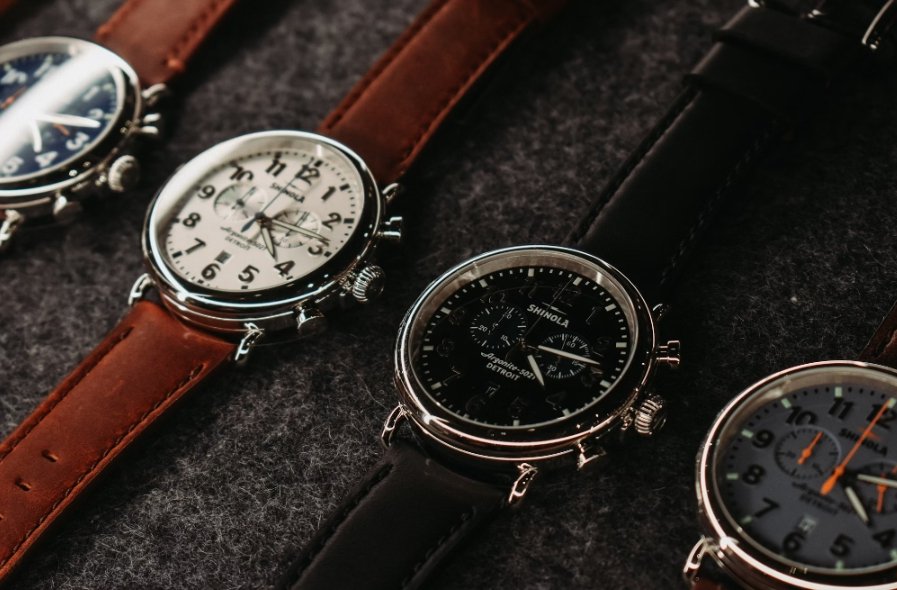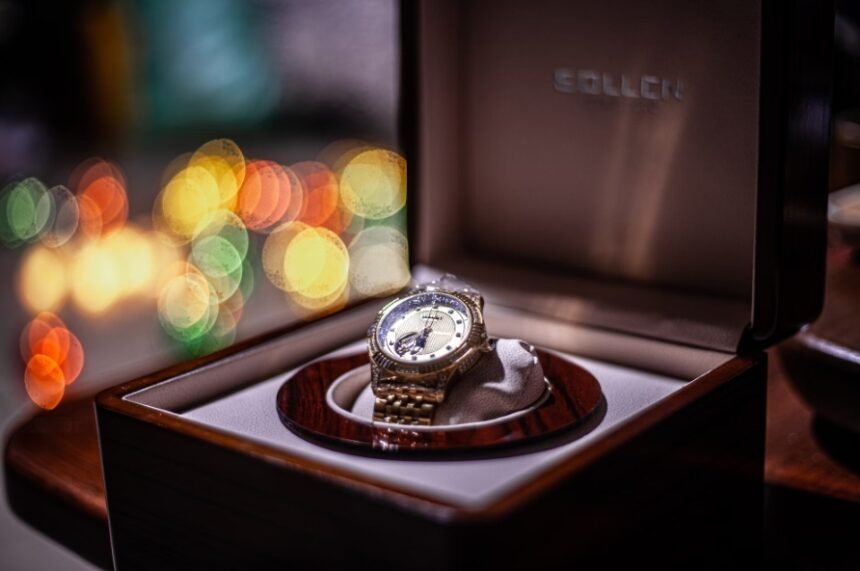The world of luxury watches has always fascinated people. There’s something special about a finely crafted timepiece that goes beyond just telling time. In an age where everyone checks their phone for the hour, mechanical watches have actually become more popular, not less. Why? Because they represent craftsmanship, heritage, and a connection to traditional skills that took centuries to perfect.
Whether you’re thinking about buying your first luxury watch or you’re curious about what makes this market tick, understanding the landscape helps you make smarter decisions. Let’s dive into what makes the luxury watch market unique and how you can navigate it with confidence.
The Foundation of Fine Watchmaking
Craftsmanship and Heritage
When you hold a quality timepiece, you’re holding hundreds of years of watchmaking tradition. The best pieces come from regions with deep manufacturing heritage, particularly Switzerland and Germany. These aren’t just watches assembled on a production line. Master watchmakers spend years learning their craft, and some movements contain over 300 tiny components, each requiring precision assembly.
What makes mechanical watches special is that they’re powered by springs and gears, not batteries. The intricate dance of these components, often visible through a transparent case back, is mesmerizing. Some watches take months to create, with artisans hand-finishing each part to perfection.
What Makes a Watch Valuable
Not all luxury watches are created equal. Several factors determine value. First, there’s the materials used, from surgical-grade stainless steel to precious metals like gold and platinum. Then there’s the movement complexity. Simple time-only watches are beautiful, but complications like chronographs, moon phases, or perpetual calendars increase both difficulty and value.
Brand heritage plays a huge role too. Companies with decades or centuries of consistent quality command premium prices. Limited production runs and special editions also drive desirability. When a brand only makes a few hundred pieces of a particular model, collectors take notice.
The Primary Market Landscape
Authorized Dealers and Boutiques
The official route to buying luxury watches goes through authorized dealers. These are retailers approved by watch brands to sell their products. When you buy from an authorized dealer, you get the full manufacturer’s warranty and the peace of mind that comes with it.
But here’s the catch: popular models often have waiting lists. Sometimes these lists stretch for years. Brands control supply carefully, and even if you’re ready to pay, you might not get the watch you want immediately. Pricing is typically fixed at retail, with little room for negotiation on new pieces.
Direct Brand Relationships
Some luxury watch brands operate their own boutiques. These brand-owned stores offer the complete experience, from trying on pieces to learning about the company’s history. Building a relationship with a boutique can sometimes help with allocation for limited pieces, though there are no guarantees.
Multi-brand retailers, on the other hand, carry several different watchmakers under one roof. They offer variety and the chance to compare brands side by side. After-sales service varies, but authorized dealers typically coordinate repairs and servicing with the brand.
The Secondary Market Ecosystem

Pre-Owned and Vintage Options
The pre-owned luxury watch market has exploded in recent years. This segment offers several advantages. You can often find discontinued models that are no longer in production. Prices can be more competitive than retail, especially for common references. And there’s no waiting list.
Collectors seeking pieces from prestigious manufacturers often work with established specialists. Horology Maison Rolex Reseller Singapore represents the type of trusted dealer that provides both authenticity and expertise when entering the pre-owned market.
Authentication is critical in this space. Reputable dealers provide certification, verify serial numbers, and often guarantee their pieces. The market has become increasingly transparent, with pricing data readily available online. This transparency helps buyers understand fair market value.
Trusted Sources for Acquisition
Finding the right place to buy makes all the difference. Look for dealers with established reputations, clear return policies, and comprehensive guarantees. Physical locations offer the advantage of seeing and handling watches before purchase, while online platforms provide broader selection.
Verification processes should include checking papers, boxes, and service history. Good dealers are transparent about a watch’s condition, including any refinishing or replacement parts. Buyer protection policies vary, so understand what you’re covered for before committing.
Regional Market Dynamics
Global Luxury Hubs
Certain cities have become magnets for watch collectors and dealers. These hubs offer advantages like competitive pricing, selection, and expertise. Some regions have favorable tax structures that make luxury purchases more attractive. Consumer protection laws also vary by location, affecting buyer confidence.
Major Asian markets have seen tremendous growth in recent years. The combination of affluent consumers, cultural appreciation for craftsmanship, and strong retail infrastructure has created vibrant watch communities. European cities maintain their traditional role as centers of watchmaking and collecting, while North American markets focus heavily on investment potential.
For those interested in exploring reputable specialists in key luxury markets, platforms like <a href=”https://horologymaison.com/”>horologymaison.com</a> offer insights into regional landscapes and available collections across different price points and styles.
Market Trends Across Regions
Different regions show distinct preferences. Asian collectors often favor precious metals and classic designs. European buyers appreciate vintage pieces and independent watchmakers. North American purchasers increasingly view watches as alternative investments, tracking value appreciation carefully.
Emerging markets are developing their own collector communities. As wealth grows in new regions, interest in luxury timepieces follows. This global expansion has made the market more dynamic and interconnected than ever before.
Making Informed Purchase Decisions
Research and Due Diligence
Before buying, do your homework. Learn about specific model references and how they differ. A single letter or number change can mean significant value differences. Check service history, which tells you how well a watch has been maintained. Original papers and boxes add value and authenticity.
Compare prices across multiple sources. Market rates fluctuate based on demand, condition, and rarity. Watch for red flags like suspiciously low prices, reluctance to provide detailed photos, or pressure to buy quickly. Legitimate sellers welcome questions and provide thorough information.
Investment Considerations
Some people buy watches purely for enjoyment. Others see them as investments. Certain models from specific brands have shown strong value retention and appreciation. Factors affecting resale include condition, completeness of accessories, service history, and market demand.
However, buying solely for investment can be risky. Market trends shift, and what’s hot today might cool tomorrow. The best approach combines passion with practicality. Buy what you love, but understand its market position. That way, whether it appreciates or not, you enjoy wearing it.
The Future of Luxury Timepieces
Evolving Collector Demographics
The watch collecting community is changing. Younger collectors are entering the market, bringing fresh perspectives. Despite growing up with digital devices, many millennials and Gen Z buyers appreciate the mechanical complexity and craftsmanship of traditional watches.
Women represent the fastest-growing segment of watch collectors. Brands are responding with designs that appeal beyond traditional gender marketing. The collector community is becoming more diverse, inclusive, and globally connected through online forums and social media.
Sustainability and Transparency
The industry is evolving toward more ethical practices. Brands are increasingly transparent about material sourcing and manufacturing processes. The pre-owned market itself represents a form of sustainable luxury, extending the life of quality products.
New technologies like blockchain are being explored for authentication and provenance tracking. These innovations could revolutionize how we verify and trade luxury watches. The combination of traditional craftsmanship and modern technology is shaping the market’s future.
Conclusion
The luxury watch market is complex but accessible to those willing to learn. Whether you’re drawn to the craftsmanship, the heritage, or the investment potential, understanding how the market works empowers better decisions. Take time to research, build relationships with reputable dealers, and most importantly, buy what speaks to you personally. A luxury watch is more than an accessory—it’s a piece of functional art that can last generations. Approach your purchase with knowledge, patience, and passion, and you’ll find the perfect timepiece for your collection.
FAQs
What makes a watch considered luxury? Luxury watches combine exceptional craftsmanship, quality materials, complex mechanical movements, and brand heritage. They’re typically produced in limited quantities with meticulous attention to detail and offer superior accuracy and longevity compared to mass-market timepieces.
Is it better to buy new or pre-owned luxury watches? Both options have merits. New watches come with full warranties and the latest designs but often have waiting lists and higher prices. Pre-owned offers immediate availability, discontinued models, and potentially better value, though authentication and condition assessment are essential.
How can I verify a luxury watch’s authenticity? Work with reputable dealers who provide certification, verify serial numbers match manufacturer records, check that papers and boxes are original, examine the movement and finishing quality, and consider professional authentication services for high-value purchases.
Do luxury watches hold their value? Some models from prestigious brands retain or appreciate in value, particularly limited editions and iconic references. However, most watches depreciate initially. Value retention depends on brand reputation, rarity, condition, completeness, and market demand. Buy primarily for enjoyment rather than guaranteed returns.








